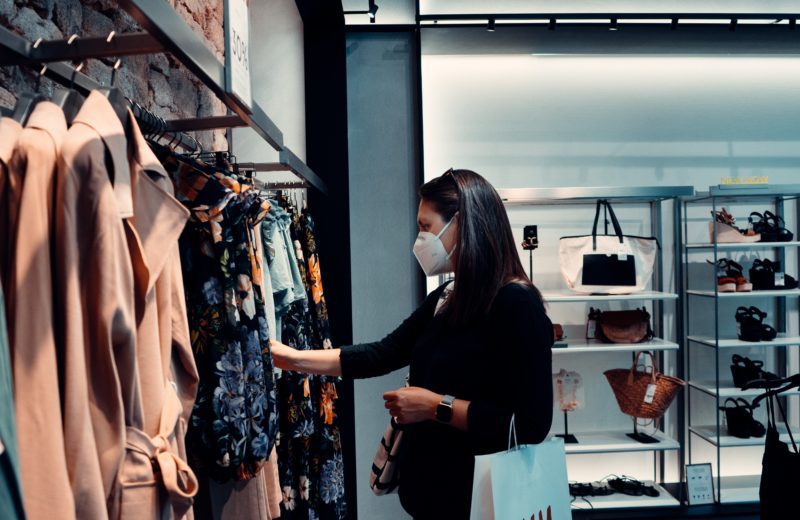Driving Customer Retention in the New Normal

It’s clear that COVID-19 has been a huge tailwind for e-commerce. From 2009 to 2019 e-commerce grew from 5% to 15%. Yet in the last 8 weeks we’ve seen this leap from 15% to 27%. Fabric Co-founder Ryan Bartley spoke with Al Lalani, Co-Founder of Annex Cloud, in a recent Market Movers webcast to discuss the implications of this rapid e-commerce growth on customers, retailers and technology.
Adjusting to the new normal
In the recent weeks, Fabric has spoken with many retailers who are impacted by the recent shift in customer demand. Since social distancing went into effect, customers have come to expect the safety and convenience of e-commerce. And they’re seeing new customers adopting e-commerce with the same expectations as their in-store experience. We can expect this bar to remain high for the long haul and we’ll continue to see these expectations grow. As a result, companies have had to act quickly to keep up with the growing demand. Ryan shared how “projects that may have taken two years in the past have now shrunk down to a few weeks, which is great to see that companies are waking up to this new normal”. Yet the new normal requires capabilities and services that didn’t exist prior.
Ryan goes on to share how Fabric has had to react very quickly to make sure we’re bringing in best-of-breed technology in our ecosystem to solve for these new experiences and challenges. He explains, “adaptation and speed is the most important thing for a company right now in terms of their technology stack.”
The new digital-first customer journey
As retailers are considering how to reopen their physical locations to ensure safety and social distancing, we’re seeing the customer journey shift to starting from digital-first. There are a few key things to consider with this new digital-first journey. First, your brand presence and what you stand for is more important than ever before. Your brand and your customer need to connect, making it not just about the transaction, but about the relationship.
Secondly, within that journey, customers want transparency and engagement. As Ryan mentions, customers “want a view into your store and the ability to interact, at a distance, with whoever is in that store.” We’re seeing the rise of capabilities like chat and video chat being used to deliver this level of interactive engagement. As of more recently, curb side pick-up and appointment scheduling are being widely implemented to ensure a safe in-person experience.
Ryan points out that “ it’s really about starting with who you are as a brand and telling that brand story, connecting both your online and offline together in a very seamless manner at the start of the customer journey through the end of the funnel.”
Loyalty to sustain growth
As retailers continue to watch e-commerce accelerate in this new normal, customer retention becomes an integral part of sustaining growth. But how do retailers achieve this? It starts with your existing customers. These customers are your best customers. Acquiring them in the first place was expensive, so prioritize them first and think about how you can serve them in the best and meaningful way by building the relationship, share of wallet, and a lifelong journey.
The other thing that retailers need to address is the basics. Ryan explains that “as we think about commerce and especially digital commerce, your storefront has to be up, it has to be online 24 hours a day. It has to be stable without errors, and it has to be fast. Customers will not wait for your page loads to load for 10 seconds. You have to have the basics of your product and simple transactional flows to quickly make a purchase and repurchase.” Nailing the basics are instrumental to your retention efforts.
Once you have the basics in place you can start to evolve beyond just the transactional relationship with the customer. You then need to figure out how to relate to your customer and connect them to your brand story. From there, you can start to identify what programs you can implement to up level that brand experience from transaction to relationship. Ryan encourages retailers to “think about how you bring your customers along the journey in several different ways. This could be subscription services, loyalty programs, or the way that you market to a person. Instead of always selling, start to think about this as a long term relationship that you want to nurture and grow.”
Adapting for success
COVID-19 is obviously changing the way we interact and the way we work. It’s going to be a long road ahead of us before we get back to some level of pre-pandemic normal. And when we do get back to that normal, the bar of expectations from our customers will be even higher. Now is the time for retailers to adapt by investing in new capabilities that will enable them to deliver across the new digital first customer journey.
According to Ryan, “if you are purely an offline retailer or offline brand, you have to start thinking about connecting that in the customer journey. And if you do that in 2021 or 2022 and make those investments then, I think you’re going to be very left behind. My expectation is you’re going to see brands that really invest and differentiate right now while the rest of those that don’t will be failing over the next couple of years.”
To hear more from Ryan Bartley and the topics covered in this post, check out the full Annex Cloud webcast on demand here.
To learn more about how Fabric’s modular e-commerce platform can help your company deliver across the digital-first customer journey, schedule a call with one of our experts.

Global strategy and field marketing @ fabric. Previously @ Suplari and Accenture.